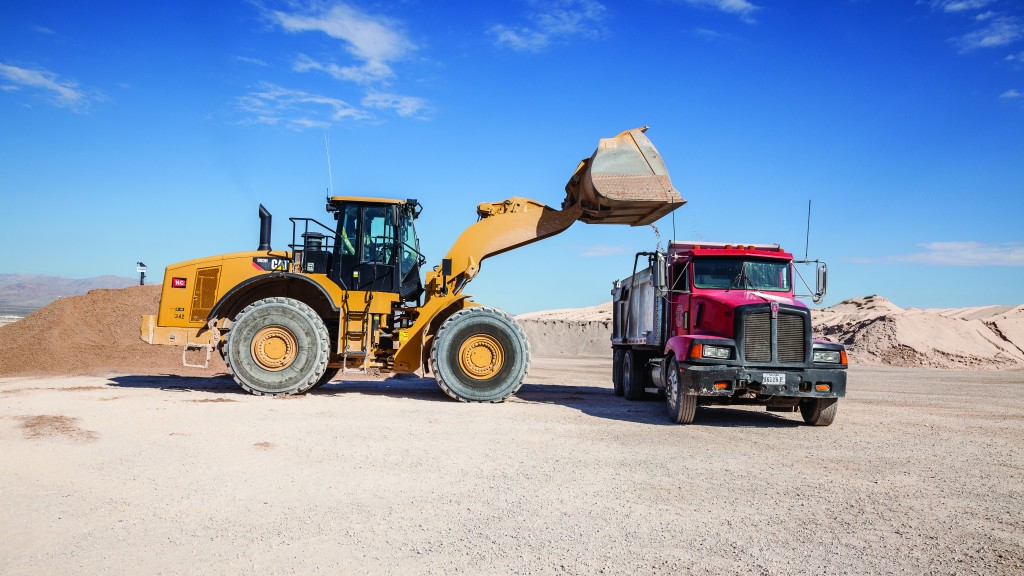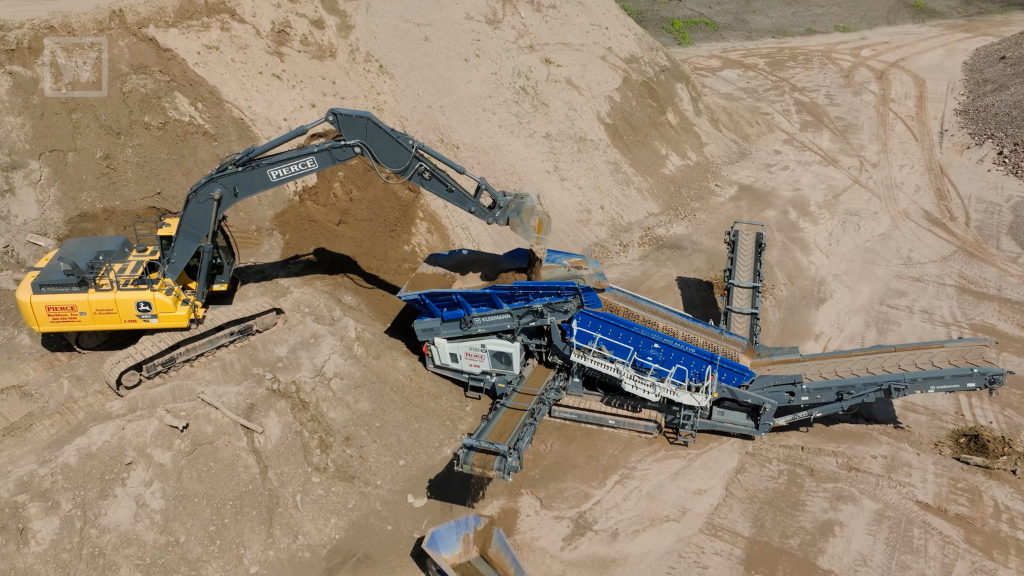Trimble LOADRITE improving quarry loadout for aggregates producers
Loader scales combine with communications technology to give aggregates operators more efficient management of trucks and material

It is no surprise that there are plenty of variables that come into play when it comes to optimizing an aggregates operation. One area in particular where telematics and other technologies can improve efficiency and profitability is tracking and managing loadout activities.
Quarries have come a long way from the days in which outgoing loads would be guesstimated for amount of material and charged accordingly. Accurate weigh scales and ticket systems have helped, but there are still many potential points where efficiency can be reduced or costs can be inflated due to errors - and plenty of potential irritation to be had for drivers, loader operators and management.
Many operations need updates to their approach and that can be started with something as simple as better communication, advised Jerome Thomas, area sales manager with Trimble.
The ideal quarry loadout workflow looks something like this: a truck arrives, crosses a weigh bridge, and the driver knows exactly which stockpile to drive to. There, a wheel loader operator knows the right material and amount to be loaded, and in short order the truck is loaded, the driver heads back to the exit, gets weighed out and is on the road.
Of course, that ideal is rarely what occurs. The entry scale may be down, or unstaffed. Drivers may not know where their stockpile is. Loader operators may not know where their truck is. Even when they do, the communication issue is front and centre.
"Generally, information – product and tonnage to be loaded – is passed either on a two-way radio to the loader operator, or shouted across from the truck driver to the loader," Thomas described. "These instructions can be rounded or estimated, and the entry time of the truck is unknown so it's difficult to know whose turn it is."
That imprecision leads to the wrong material being loaded, or arguments between drivers and operators that end up with machines and trucks idling, employees out of their seats and general friction, Thomas noted.
Slower cycle times and longer trips for trucks occur, and there may be mixups with material – which is a problem when a more expensive product leaves the quarry or the material that reaches its destination is wrong for the job.
Quarries may also end up with problems like trucks queueing up to pick up material or a bottleneck at the scale house on the way out of the site. That can cause problems that stretch off the site, causing traffic flow issues, dust and other irritations for neighbours.
Tying technology together
Changing the flow of communication and adding automation to the process is one way to tackle some of those problems, Thomas noted.
Trimble's LOADRITE 360 system, for example, can be a key piece of the puzzle, helping bring numerous pieces of technology within the quarry site together and help streamline data while safeguarding the operation against some of the common problems that may crop up.
"We basically install a server on site that's connected to the customer's point-of-sale software," Thomas explained. "Both talk to each other through API, and then from the server to the payload we use a radio modem."
With that in place, the workflow can become much smoother. When a truck arrives, a ticket is started that indicates the material needed and amount; that information is then pushed through LOADRITE 360 out to the appropriate loader operator. The truck can then proceed to the stockpile, where the loader will be prepared with the proper material and the correct weight to load.
LOADRITE loader scales come into the process during loading, ensuring that the operator knows precisely how much material they are moving while also recording it in the central system.
"This brings the operator simplicity - clear and precise instructions coming directly onto his payload system - and it eliminates discrepancies between them and the truck drivers," Thomas said.
Operators are also able to track other factors, such as the wait time of any particular truck; if a truck has been waiting longer than expected, it may indicate that the driver has gone to the wrong spot in the quarry or is otherwise lost, and the loader can sort out the problem quickly.
Precision measurements, ensuring the product is correct, and reduced confusion between drivers and loader operators all help cut down on such things as travel distance and idle time on site, Thomas noted.
"Operators aren't reacting to immediate stress - they have full visibility of how many trucks are on site, where they are and how long they've been there. Loading tasks can be rationalized and easily improved," he said. "It also improves stockpile management and loader task management; all information going into the payload system is coming from the quarry point-of-sale software, so they are reliable and not reliant on operator selection."
There are numerous ways in which quarry operators can take advantage of automation, as well as other features of LOADRITE, to improve efficiency at their operations.
Real world solutions
One large producer was having issues with some of its smaller quarries, which were not producing enough to keep a scale house operator busy through the day. The company decided that removing the weigh bridge was its best option for keeping those quarries operating.
Taking advantage of LOADRITE loader scales that were certified as legal for trade, the company first started by having its loader operators generate the ticket for each truck they saw. While that removed the weigh bridge and operator for some yearly savings, it also increased loader idle times by 10 percent because the operators were required to do more in their cab to track the outgoing material. In addition, people needed to get out of their cabs to pick up and deliver tickets.
The company re-evaluated its approach and instead moved to a kiosk system at the entrance to the quarry. There, the truck driver could generate his own ticket with the type and amount of material required, which would be sent directly to the loader operator's system. The truck would move to the loader, get the required material loaded up, and head out without waiting or weighing out. In the end, the producer was able to keep all of its smaller quarries operating thanks to the cost savings.
Another contractor operated a number of small sites where recycled material would be dropped off and processed, set in strategic locations around its operating area. That company also used a kiosk that generated a photo of the truck license plate and ID number, which was associated with the ticket and filed back at company headquarters to allow for tracking of material and truck movements.
In a third example, a large aggregates producer was having problems with product errors and weight challenges. Adding LOADRITE 360 to its system helped the producer turn its workflow around – literally. Instead of a weigh bridge at the exit of the quarry, it was moved to the entrance, allowing for correct taring in of trucks; from there, a legal for trade LOADRITE scale was used to load out, using the product and weight information sent by the 360 system.
Overall, the use of automation in loadout operations can reduce costs, cut customer waiting times, drop loader operation and idle times, provide coaching opportunities for loader operators, and benefit staff all around. It can even be used to schedule loading a day ahead of time, or tie into truck telematics systems.
"Today, most sites are simply receiving trucks as they come in, being reactive. The improvement can come from the capability to anticipate truck visits and link those sales to the production site," he said. "We can install telemetry onto trucks that are moving around the quarry, and when they come into a perimeter – let's say 10 kilometres from the quarry – we can automatically notify the quarry's point-of-sale software. If the orders have been entered the day before, these loadout instructions can be pushed to the loader directly just as the truck drives in."
Adding such automation to a quarry's operations is relatively easy, Thomas added, and the benefits are immediately noticeable.
"Everywhere we implement this, the happiest person in the place is the loader operator," he said. "He gets simple and precise instructions that come up in the display when he needs it. It cannot be simpler." HEG



